The Lost Cities Of The Ancient World
Travel
Throughout humankind, cities and empires have risen and fallen. From the Babylon empire to the Ottoman Empire that almost ruled the world. Some cities and empires are still known to the modern world as their records and ruins have been discovered. However, there are those that will never be known to the modern world as there are absolutely no records about them, and nature has taken its course upon the cities hiding them from us. Fortunately, there are those cities that were not known to us but have been discovered. However, there are those who have been recorded to have existed but yet there is no one who has been able to locate them.
The City of Atlantis.
We are quite sure you have heard about the lost city of Atlantis. This is one of the famous tales of the lost city and has many articles over the internet, books published about it and Hollywood took the case way too far and made movies and TV shows out of it.
As the story of Atlantis goes, it is said that the city was engulfed by the sea and since then it has been lost forever and never to be found. But the story of Atlantis City is not unique, as there are similar legends of cities and landmarks that had been submerged under the sea, and these legends come from other cultures. The common resemblance about these legends is that, these cities mentioned in these legends have never been found. However, these stories which were once seen as myths or legends have now proved to be true. Some lost cities’ ruins have been discovered deep down within the ocean. This has led to a question as to how many more cities are still buried waiting for someone to uncover them someday?
Unlike other famous legends, who their origins have been lost with time, but when it comes to Atlantis we do know exactly when and where the tale had first appeared. The legend of Atlantis first appeared in two of Plato’s dialogue titled ‘Timaeus’ and ‘Critias’ which were written in 360 B.C.
Plato was quite clear in mentioning the exact location of Atlantis as he mentioned that, “For the ocean there was during that time which was navigable; it was in front of the mouth which Greeks refer as the pillars of Heracles, there was an island which was bigger than Libya and Asia combined.” This meant that the Atlantis lay in the Atlantic Ocean beyond the Straits of Gibraltar, along the Mediterranean shores. However, it has never been located on the Atlantic or somewhere else.
Besides, some scholars (especially Muslim scholars) the city has been spoken of in the Quran which is referred as the Iram of Pillars. The Quran speaks of Iram as to have been a city that was covered with lofty structures, and was populated by a community, which was known as Ad. AS these people had turned away from their God (Allah) and stopped obeying him. These people according to the Quran were doing things that were against the will of Allah and did not listen to Allah’s messenger, Hud. Allah was so angry with them and decided to punish them, and Allah sent a sandstorm against the city for seven nights and days. When the storm was over, the city had vanished below the sand as if it never existed.
Back in the 1990s, a team that was led by Nicholas Clapp, who was an amateur archeologist as well as a filmmaker, made an announcement that he had found the lost city of Ubar, which was later identified to be the city of Iram of the Pillars. The findings were made possible using NASA’s remote satellite’s sensing technology that had ground-penetrating radar, Landsat program data as well as images, which were taken using a space shuttle by the name of Challenger. Using these resources the team was able to determine ancient camel trade routes and the points at which they crossed. One of those points was a famous water hole located at Shisr, around Dhofar province, in Current Oman. When the excavation took place at the site, they came across a huge, octagonal fort that was made up of high walls as well as tall towers. The team made an announcement that they had discovered the lost city of Iram of the Pillars. But there are still arguments and doubts from different scholars to whether Ubar and Iram refer to the same city, but many scholars do agree that the story of Iram was inspired by the city of Ubar.
Whether the Iram of the Pillars is the same as the city of Atlantis, many scholars doubt that, as according to Plato, the city of Atlantis was an Island that was engulfed by the sea, while Iram was covered by sand from the sandstorm.
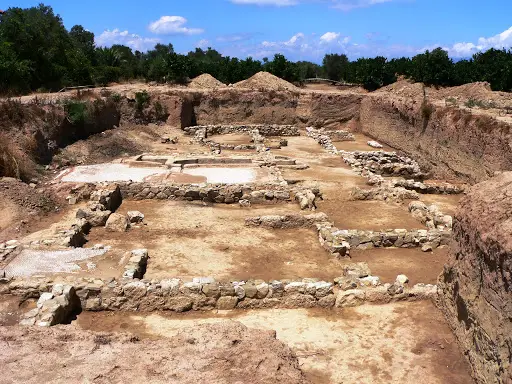
The Lost City of Helike was a legendary ancient city which sat in Achaea, upon the northwestern part of the Peloponnesian peninsula. During the time when the city was at its peak of prosperity, the city led the first Achaean League, which was a confederation that was made up of 12 cities within the surrounding area. Having this position, Helike was the economic, cultural and religious hub. The Helike people worshiped Poseidon as their patron god, who was the Greek god of the sea and earthquakes. This is not surprising, as Helike sat upon one of the most active earthquake zones in European continent.
One fateful night during the winter back in 373 B.C., the city was destroyed. Some signs of the city’s initial doomsday were recorded. This included the appearance of large columns of flames. There is also a record that accounts the mass migration of small animals from the coast towards the mountains. This took place several days before the occurrence of the disaster. On the fateful day, there was a major earthquake which was followed by a huge Tsunami that rose from the Gulf of Corinth. This wiped the city of Helike from the earth’s surface. The rescue team that had arrived in the following morning found no single survivors. Throughout time the location of Helike was entirely lost.
In the 19th century, there were speculations regarding the actual site where Helike sat. these speculations started to spread around. However, it was until 2001 when the ancient city was able to be located and unearthed in Achaea, Greece. Back in 2012, the destruction layer was also uncovered, and it confirmed that the site to be the lost city of Helike.
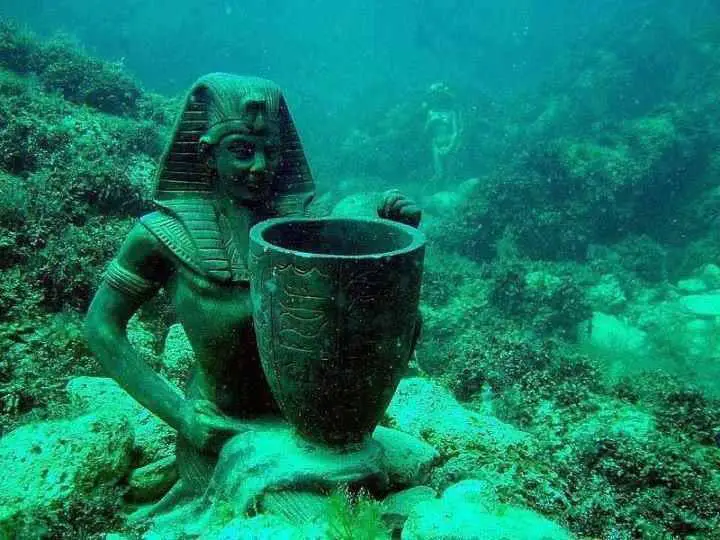
The Ancient City of Heracleion which is regarded to be a temple where Cleopatra was crowned. The city was engulfed within the Mediterranean Sea beyond the coast of Egypt over 1,200 years ago. At its time, the city was a trade hub within the Mediterranean before it sank deep under the sea. For many years, people considered that the tale to be a myth much like the tale of the legendary city of Atlantis as it is viewed today. But back in 2001, an underwater archeologist with his team who were searching to find French warships came across the sunken city.
As soon as he removed the layer of sand as well as mud, the team of divers uncovered a well-preserved city with many of its structures and treasures still intact, and this includes its main temple which is known as the Temple of Amun-Gerb. Besides, there are giant statues of pharaohs, hundreds of tiny statues of gods as well as goddesses, ancient ships, a sphinx, stone blocks having Greek and Ancient Egyptian inscription, 700 anchors, gold coins, dozens of sarcophagi, and weights that were made using bronze and stone. This was one among the important underwater discoveries in over a hundred years.
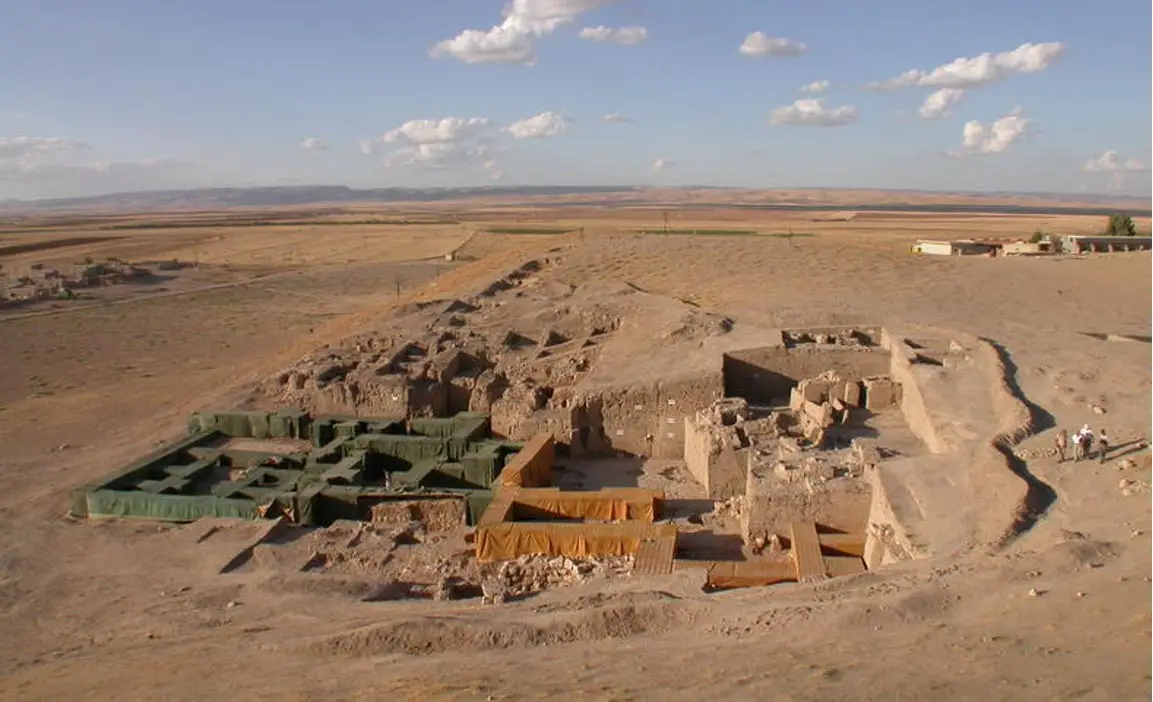
The uncovering of Urkesh, the lost city of the Hurrians. There was a time during the ancient world, where Urkesh was a central hub of the ancient North Eastern Hurrian civilization, which is known in mythology as being the home of a primordial god. The city flourished during the 4000 and 1300 BC being the center of politics and religion, and as an important trade hub upon both north-south trade route that ran between Anatolia and the cities of Mesopotamia and Syria. Besides, the east-west route linked the Mediterranean to the Zagros Mountains that were located in the western Iran. The city was also the capital of a kingdom where it controlled the highlands up to the North where there were copper mines that were making the city rise to prosperity.
There was little information known about Urkesh as well as the Hurrian civilization, as this ancient city had remained buried deep within the desert sands for thousands of years, off from the pages of history. But back in the 1980s, archeologists were able to locate Tell Mozan, which was a towering mound that was hiding the remaining ruins of this ancient palace, plaza and temple. A decade later, researchers made an astonishing discovery that Tell Mozan was what was known as the lost city of Urkesh.
The excavation came to reveal many of the details that we do know today about the ancient Hurrian civilization. The uncovered ruins of this ancient city revealed that it had an open plaza, a monumental flight that was made up of stairs as well as an underground deep shaft which was a passage that led to the Netherworld, which is linked to the religious rituals. There is a large palace that contained written information that was able to shed the light which was able to confirm the identity of the ancient city.
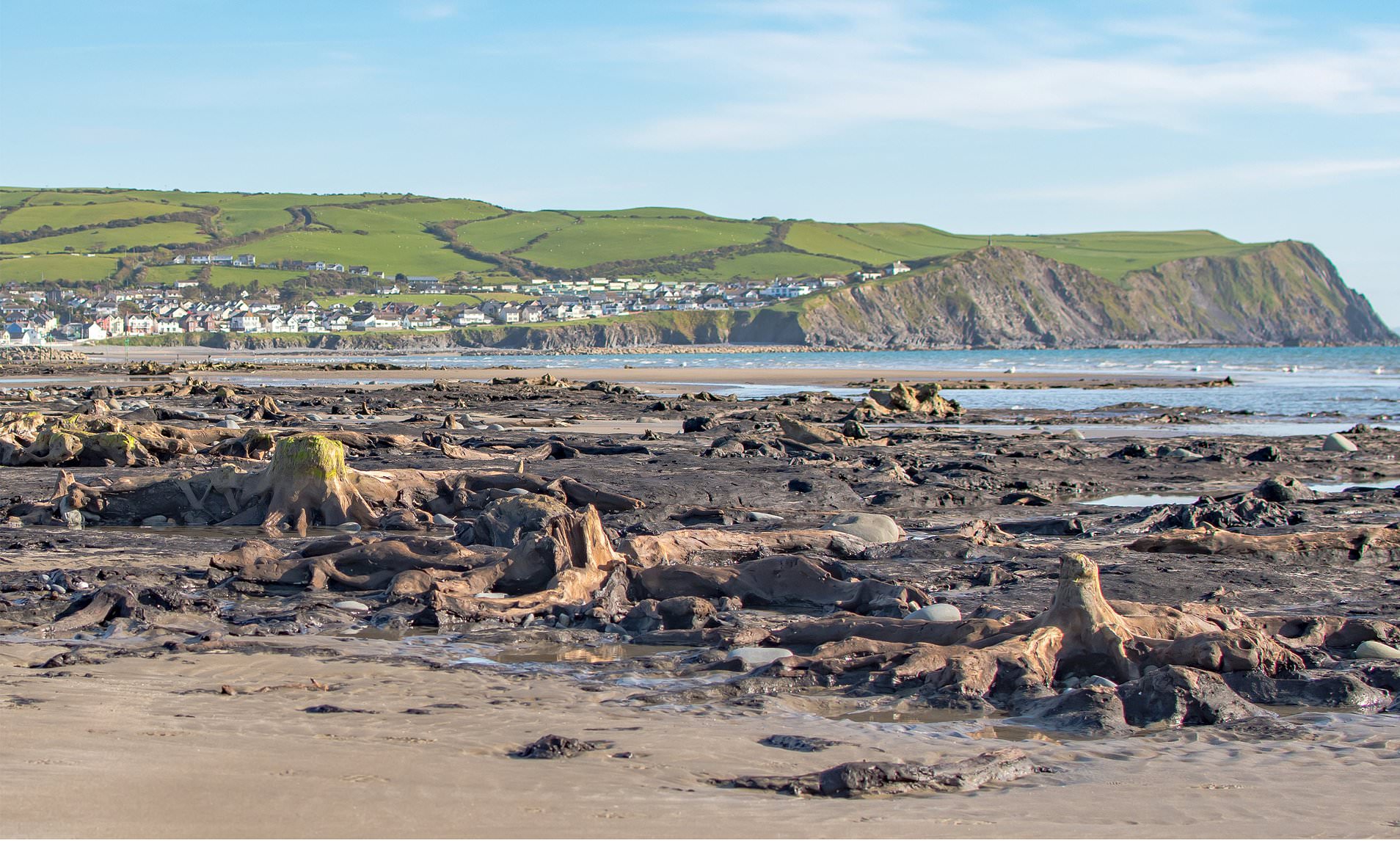
Cantre’r Gwaelod, the mystical sunken kingdom of Wales was said to have ruled over by a king who was known as Gwyddno Garanhir during the sixth century. Up to the 17th century, Cantre’r Gwaelod was famously known as Maes Gwyddno which means Gwyddno’s land, and was named after its ruler. An earlier version of this legend which was associated with Maes Gwyddno claims that the land was engulfed below the sea when Mererid, who was a priestess of an entirely fairy well, that commanded water to overflow over the kingdom, sinking it entirely to never rise again.
Several years ago, there was an emergence of prehistoric forests, which was due to stormy weather that took place at a Cardigan Bay, located in the West of Wales. The storm led the claims that the side might be the legendary Canre’r Gwaelod. Further investigations found out a wattle walkway that consisted of posts, fossilized human remains as well as animal footprints, and human tools. The site of the ancient kingdom is now believed to be located between the Islands of Ramsey as well as Bardsey in Cardigan bay, and it extends further to about 32 kilometers to the west of the current shoreline within the bay.
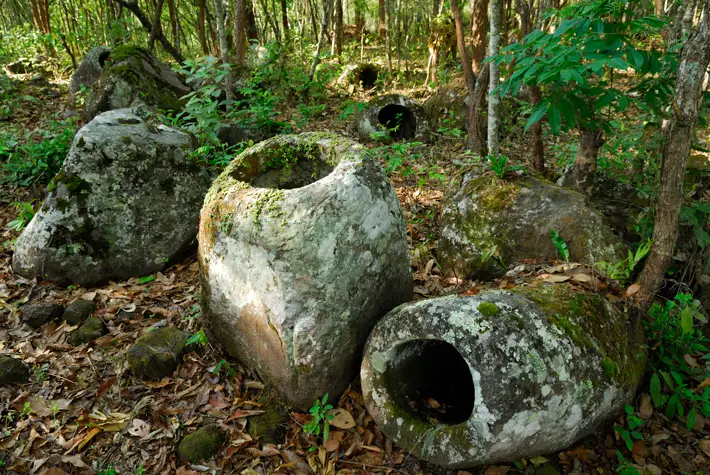
Eight years ago, an aerial search within the dense jungle of Honduras that was fueled by local legends regarding the lost ancient city, ended up revealing what seemed to be man-made features extending for miles. News spread like wildfire that the archeologists had found the La Ciudad Blanca (The White City), which is also known as the Lost City of the Monkey God. But what they had to do was to vaguely scan the jungle that was lying below. But back in 2015, a grounded expedition visited the place and confirmed the investigation and were able to reveal that the aerial images really showed the traces of the lost civilization. Archeologists plundered the place and discovered that there were huge plazas, mounds, earthworks, an earthen pyramid, as well as dozens of smoothly carved artifacts which belong to a mysterious culture that was not known to the modern world.
La Ciudad Blanca is an ancient city which was known to be have been located in the virgin rainforest which is known as Mosquitia found in the eastern Honduras. The Spanish conquistadoe Hernan Cortes had reported hearing about this important information regarding the ancient ruins, but he was not able to locate them. During the year 1927, pilot Charles Lindbergh had reported seeing monuments that were constructed using white stone while he flew above the eastern Honduras. In the year 1930s, there were rumors regarding a place situated in Honduras regarding the City of the Monkey God, which was compared with Ciudad Blanca, and back in 1939 the adventurer named Theodore Morde claimed that he had eventually found the City of the Monkey God, and to prove his claim he brought thousands of artifacts back to the US. As claimed by Morde, the indigenous people said that there was a giant monkey god statue that was buried at the site. Morde never produced the exact locations of his findings as he was afraid that the side would be plundered and looted. Unfortunately, Morde died without returning to perform a proper excavation.
In 1952, an explorer by the name of Sekeli and his team searched for the White City where by their expedition was financed by the Honduras Ministry of Culture, but he was never able to locate the place. Back in the 1990s the search picked up pace due to the rise of reports regarding the legend in popular news outlets. In 2012 the first important discovery was made. As by now investigators have been able to uncover a huge complex that laid untouched for thousands of years ever since the city was abandoned.
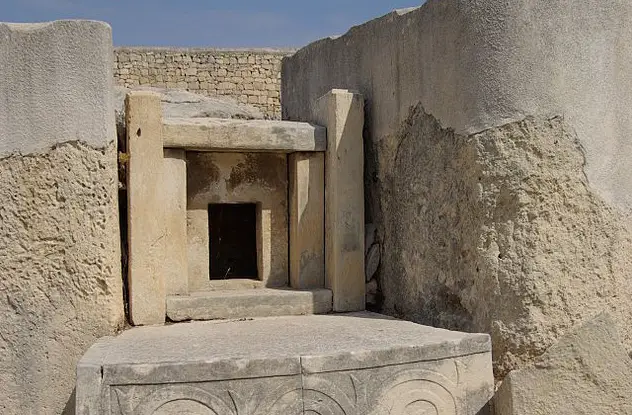
The discovery of the ancient lost Temple of the City of Musasir which was an important araratian temple dedicated to Haldi, who was the supreme god of Urartu kingdom, which was an Iron Age kingdom that was located along Lake Van within the Armenian Highlands, that stretches out across what is now known as Turkey, Iraq, Iran as well as Armenia. The temple was located in the holy city called Ararat that rose in 825 BC. When the city of Musasir fell to the Assyrians invaders back in the 8th century BC, the ancient temple disappeared from the pages of history.
The temple of Musasir was built during the time when Urartians, Assyrians as well as Scythians when were at odds, who were trying to gain dominance over the area that is currently known by the name of Iraq. Ancient inscriptions refer to Musasir as being the holy city and was founded upon the bedrock as well as the city of the raven. The name of Musasir itself means the exit of the serpent. The details of the temple can be found in an Assyrian bas-relief which detailed the palace of King Sargon II at Khorsapat, to celebrate his victory that led to dominate the seven kings of Ararat back in 714 BC.
Throughout the years, different studies as well as excavations were started trying to locate this ancient temple of Musasir. All these expedition were unsuccessful until, but back in July 2014, there was an exciting announcement that was made that the long lost temple of Musasir was finally found. It is located within the Kurdistan region of northern Iraq, and the findings consisted of a life-sized human idols as well column bases that were from a temple which was dedicated to Haldi who was their god. All these were dating back to the period when the temple was built.

Mwijage Prince